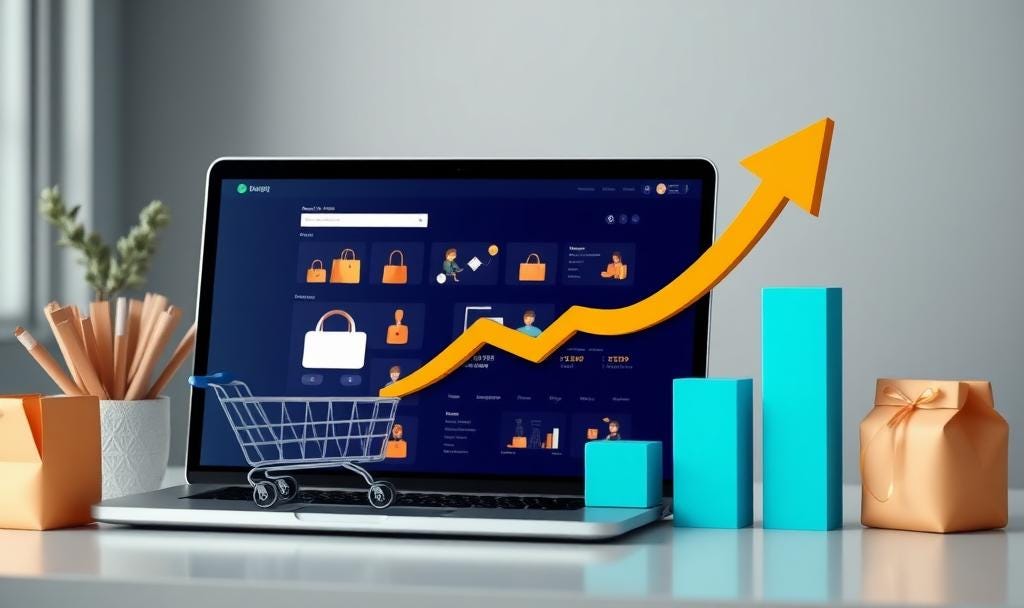7 Data-Driven Strategies to Increase Shopify Sales
Actionable strategies to optimise your Shopify store, drive more sales, and grow your eCommerce business.
Is your Shopify store falling short of the sales you expected?
You’re not alone. A recent study shows that 68% of new online store owners struggle to meet their sales goals in their first year. But here’s the good news: with Shopify-specific strategies, you can turn things around.
In this guide, we’ll walk you through seven practical, proven methods to boost your sales. These aren’t just generic tips—they’re tailored to Shopify store owners and easy to implement. Let’s dive in!
Discover How Customers Find Your Store
Understanding how customers discover your store is the first step toward improving sales. While spreading efforts across multiple marketing channels might seem like a good idea, some platforms will yield better results for your specific audience.
Take Maria, the owner of an organic skincare store. By analysing her Google Analytics Acquisition report, she found that most of her sales came from Instagram Reels showcasing her skincare routines. She shifted her focus to creating two Reels per week and doubled her sales within three months.
Use tools like Google Analytics or Shopify Analytics to identify your top-performing channels. Dive into UTM tracking for campaigns to understand where your traffic converts best. This insight ensures you’re investing time and money where it matters most
For deeper insights into customer journeys and advanced analytics, consider using Aixel. It goes beyond basic metrics to show how different marketing efforts impact conversions, helping you fine-tune your strategy.
Learn How Customers Navigate Your Site
Knowing how people interact with your store is crucial for spotting bottlenecks and improving conversions. Tools like Microsoft Clarity or Hotjar can show you heatmaps, click paths, and session recordings, giving you a clear picture of how users experience your site.
For example, Tom, who runs a custom phone case store, noticed a high cart abandonment rate during the customisation process. After using session recordings, he realized customers were confused about uploading their photos. Adding a tutorial video boosted his sales by 35%.
Ensure your site is mobile-optimised, as a majority of eCommerce traffic comes from mobile users
For a more detailed look into key Shopify metrics like conversion rates, AOV, and customer lifetime value (CLV), check out our blog on 5 Essential Shopify Metrics You Should Be Checking Every Day. Tracking these metrics can give you actionable insights to optimise your store.
Create a Personalised Shopping Experience
Personalisation is a powerful way to build customer loyalty and drive sales. Shopify apps like Klaviyo for email marketing or LimeSpot for product recommendations can help you deliver tailored experiences.
For instance, show returning customers products based on their previous purchases or browsing history. If someone buys lavender soap, suggest your lavender lotion or candle.
Email marketing is another effective personalisation tool. Send cart abandonment emails with small discounts to entice customers to complete their purchase.
Optimise Your Store for Speed
In today’s fast-paced world, a slow-loading site can cost you sales. Studies show that a one-second delay in load time can reduce conversions by 7%.
Lisa, who runs a jewellery store, discovered her site took 8 seconds to load, resulting in a high bounce rate. By compressing images, removing unused apps, and using Shopify’s speed score tool, she reduced her load time to 3 seconds, leading to a 25% sales increase in just one month.
Use tools like Google PageSpeed Insights to diagnose speed issues. Optimize images and minimise large video files on your homepage.
Simplify the Checkout Process
The checkout process is where many sales are won or lost. David, an art supply store owner, noticed many customers abandoned their carts. He simplified his checkout by removing the requirement to create an account, resulting in 40% more completed purchases
Use Shopify Checkout or any one-click checkout apps to streamline the process. Show shipping costs upfront, offer popular payment options like PayPal or Shop Pay, and avoid asking for unnecessary information during checkout.
Provide Instant Support
Shoppers often have questions before making a purchase, and being available to answer them quickly can make a huge difference. Sarah, who sells vintage clothing, started using WhatsApp Business to answer customer questions about size and fit. This change helped her close 45% of her sales.
Add live chat options using tools like Gorgias. If 24/7 support isn’t feasible, create a detailed FAQ page to address common questions about shipping, returns, and product details.
Make Small, Consistent Improvements
Success in eCommerce isn’t about one big change—it’s about continuous optimisation. Ana, who runs a handmade jewellery store, started by improving her product descriptions, adding better images, and testing different homepage layouts. Over three months, her small changes resulted in steady sales growth.
Use A/B testing for product photos, descriptions, and CTAs. Track the impact of your changes with Shopify Analytics to see what works best.
Time to Take Action
Building a successful Shopify store is a journey of constant improvement. Start by choosing one area of your store—whether it’s site speed, checkout process, or customer support—and focus on improving it. Test, analyse, and iterate for long-term success.
Want to make optimisation even easier? Aixel analyses your store and highlights exactly what needs improvement, taking the guesswork out of the process. Join our waitlist at Aixel.io and be the first to transform your store into a sales machine!



